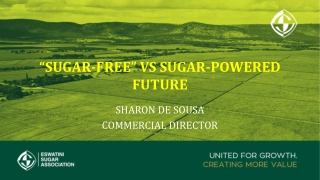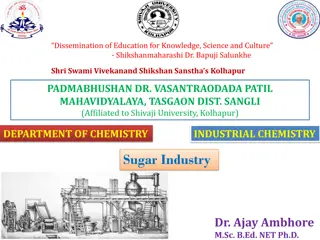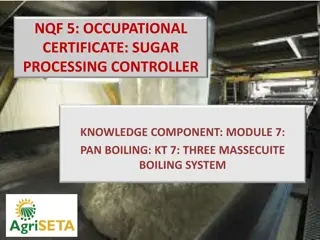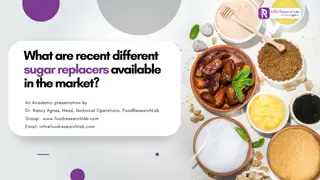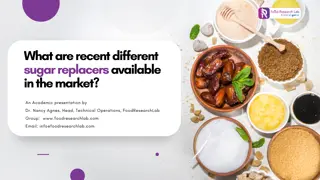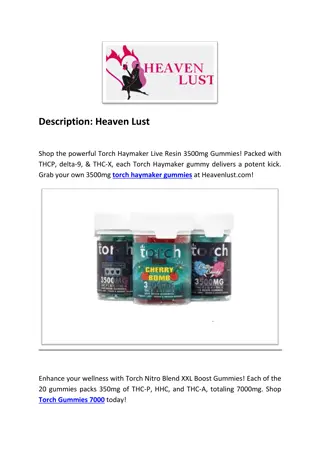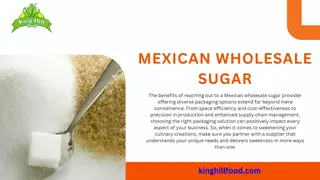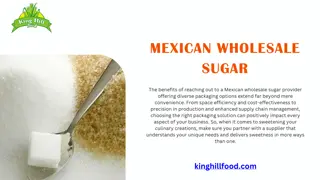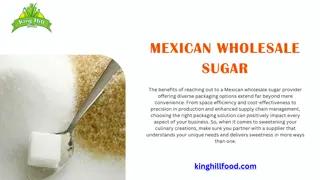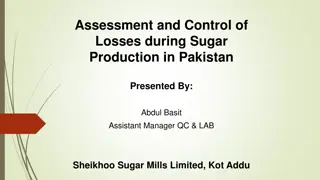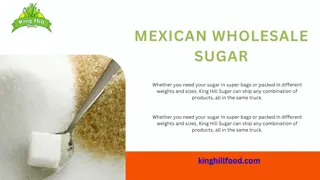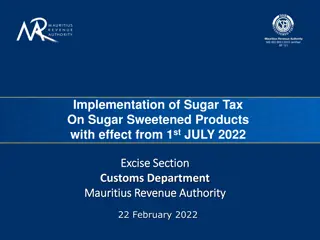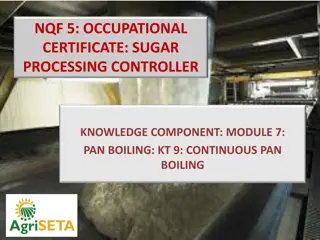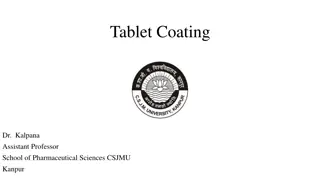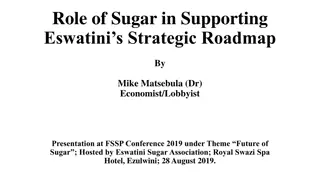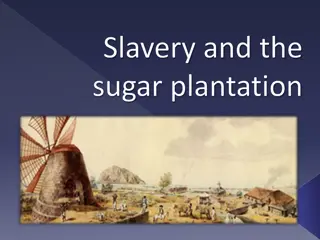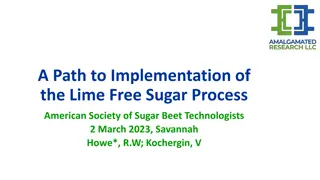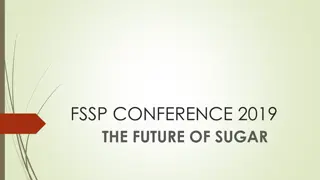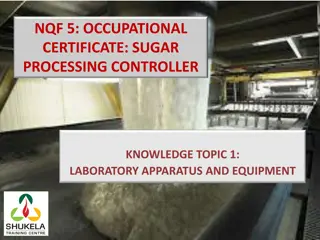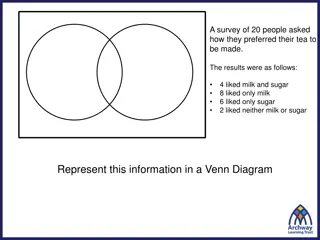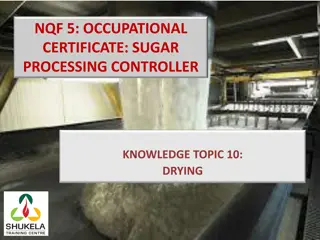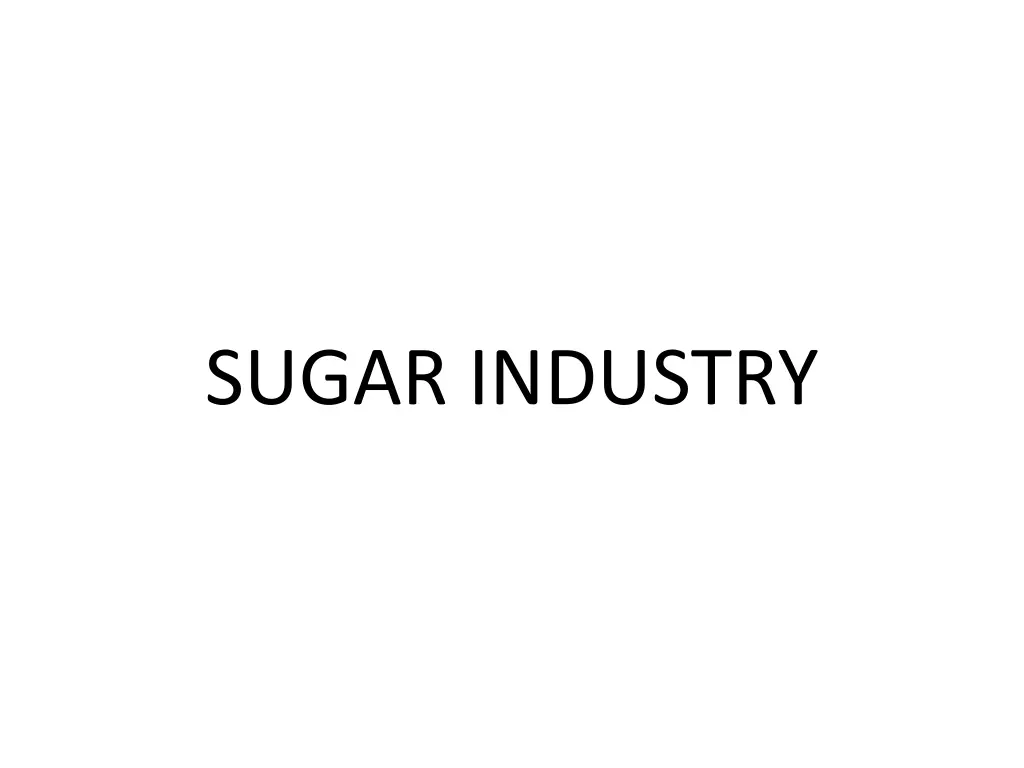
Sugar Industry Process: Extraction to Crystallization
Delve into the intricate process of the sugar industry, starting from the extraction of sugar cane and white beet to the final stages of crystallization and packing. Learn about the main steps involved, such as screening, purification, carbonation, and more, as well as the chemical reactions and detailed processes like liming, filtration, sulphetation, and bleaching. Explore the journey of raw materials to refined sugar in this informative guide.
Uploaded on | 10 Views
Download Presentation

Please find below an Image/Link to download the presentation.
The content on the website is provided AS IS for your information and personal use only. It may not be sold, licensed, or shared on other websites without obtaining consent from the author. If you encounter any issues during the download, it is possible that the publisher has removed the file from their server.
You are allowed to download the files provided on this website for personal or commercial use, subject to the condition that they are used lawfully. All files are the property of their respective owners.
The content on the website is provided AS IS for your information and personal use only. It may not be sold, licensed, or shared on other websites without obtaining consent from the author.
E N D
Presentation Transcript
RAW MATERIAL Sugar cane White beet
Reaction Carbonation C12H22O11 . CaO +CO2 C12H22O11+CaCO3 Ca(OH)2 +CO2 CaCO3 +H2O sulphetation C12H22O11.CaO+SO2 Ca(OH)2 + SO2 C12H22O11+CaSO3 CaSO3 +H2O
Main steps Extraction of sugar cane Screening of juice Purification of juice Liming Filtration Carbonation Sulphetation Bleaching of juice Concentration of juice
Crystallization of juice Separation of crystals Drying of wet crystals Packing
DETAIL 1 EXTRACTION OF JUICE After washing of sugar cane we extract juice from sugar cane by passing through a roller series during this process water also showered so we get juice 97-98% from sugar cane. After extraction of juice begasse is left which is use as a raw material of paper industry and also also use as a fuel. 2 screening of juice In this section suspended particals and impuritis are removed from juice by passing through a screen.
3 liming of juice After screening of juice its heated by a heater and then sent to the liming section or defication section. in this section we add 2-3 % lime to separat the organic acids and mineral phosphate in the form of ca salt . Protiens and colourd particals are also removed by co-agulation . in this section calcium sucrate is produced in small quantity
4 filtration In this section impurities are removed from the juice in the form of precipitates for this purpose rotary drum filters are used . Then juice sent to the carbonation section 5 carbonation After filtration of juice calcium sucrate is present till now . To seprate the calcium sucrate react with carbon dioxide and the process is known as carbonation . In this process calcium sucrate is break and give caco3 which is removed by the filtration . After filtration Ca(OH)2 and calcium are present in small quantity
6 sulphetation In this section to remove Ca(OH)2 and calcium sucrate react with SO2 calcium is break and give CaSO3 which is removed by the filtration 7 bleaching of juice In this section there are many charcoal tanks in series . The size of tank is 10 x 20 ft and 24-36 tanks are enough for 1 million pound juice . For bleaching purpose activated carbon and animals charcoal are used to remove coloured particles and the pure juice sent to the next section 8 Concentration of juice in this section pure juice is 60% concentrate for this purpose multiple effect evaporators are used
9 crystallization In this section concentrate juice further concentrated to prepare for this pure supper saturated solution and crystals are formed. for this purpose vacume pans are used at low pressure . 10 separation of crystals To separate the crystals from mother liquer or molasses centrifuges are used in this process hot water is also showered .molasses is a by product of sugar industry 11 drying These crystals are dried by hot air for this purpose granulaters are used. in this process wet crystals and hot air are flowing co-currently . After drying of crystals these are sent to the packing section.

